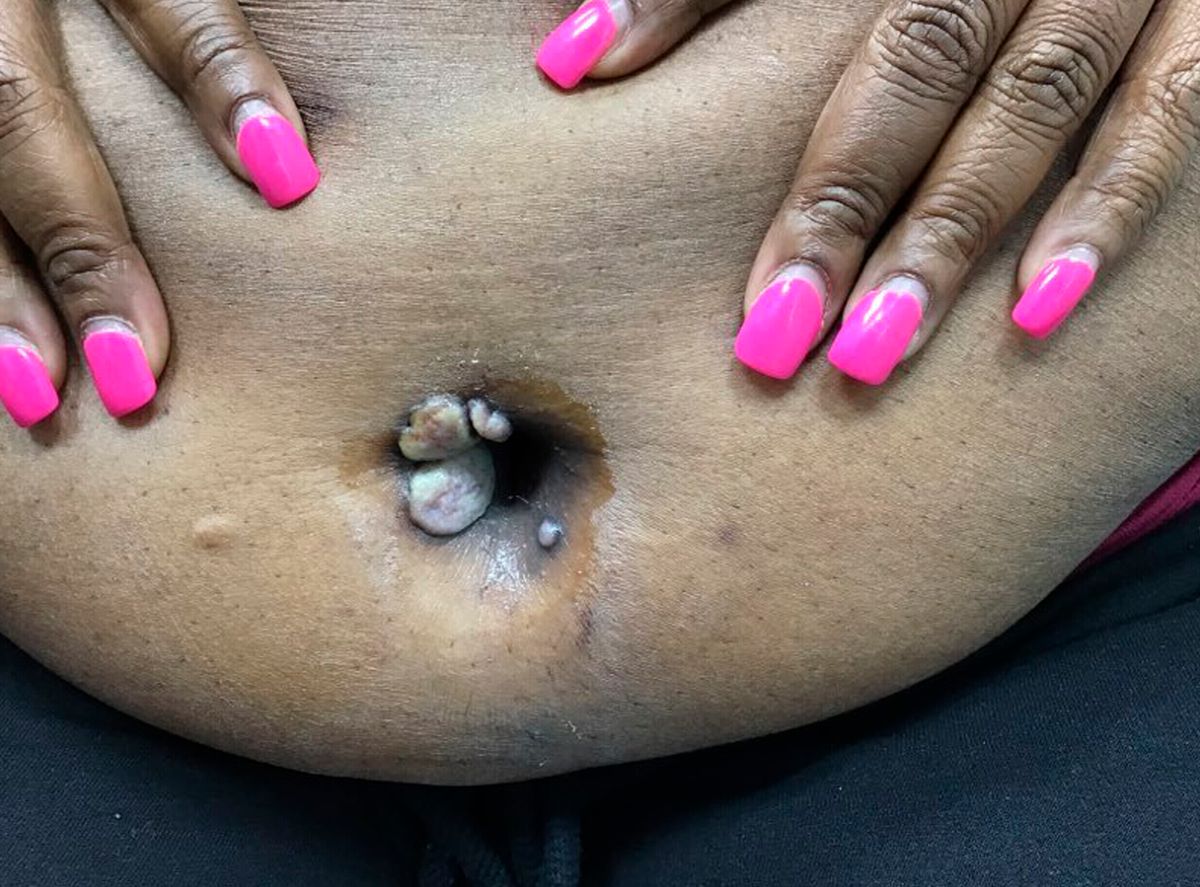
Condylomata lata might sound like a tongue-twister, but it's actually a medical term you should know. These are smooth, moist, flat-topped bumps that appear during the secondary stage of syphilis, a sexually transmitted infection. Syphilis is caused by the bacterium Treponema pallidum. These lesions are highly infectious and can show up in warm, moist areas of the body like the genitals, anus, or mouth. Recognizing and treating syphilis early is crucial to prevent serious health issues. In this post, we'll dive into 48 intriguing facts about condylomata lata, shedding light on symptoms, treatments, and prevention. Get ready to learn and stay informed!
Key Takeaways:
- Syphilis can cause flat, wart-like growths called Condylomata Lata, which are highly contagious and may appear in moist areas of the body. Early detection and treatment are crucial.
- Using condoms, regular STI screening, and avoiding sexual contact with infected individuals can help prevent syphilis and Condylomata Lata. Treatment with antibiotics is effective in curing the infection.
What is Condylomata Lata?
Condylomata Lata are a symptom of secondary syphilis, a sexually transmitted infection caused by the bacterium Treponema pallidum. These lesions are highly infectious and can appear on various parts of the body.
- Condylomata Lata are flat, wart-like growths that typically appear in moist areas of the body, such as the genital region, anus, and mouth.
- These lesions are usually painless but can cause discomfort due to their location and size.
- They are highly contagious and can spread through direct contact with the lesions during sexual activity.
- Condylomata Lata can appear anywhere from a few weeks to several months after the initial syphilis infection.
Symptoms and Appearance
Understanding the symptoms and appearance of Condylomata Lata can help in early detection and treatment.
- The lesions are often gray or white and have a smooth, moist surface.
- They can range in size from a few millimeters to several centimeters.
- Condylomata Lata may be accompanied by other symptoms of secondary syphilis, such as a rash, fever, and swollen lymph nodes.
- The lesions can sometimes be mistaken for other skin conditions, such as genital warts or herpes.
Diagnosis and Testing
Proper diagnosis is crucial for effective treatment and preventing the spread of syphilis.
- A healthcare provider can diagnose Condylomata Lata through a physical examination and medical history.
- Blood tests are often used to confirm the presence of syphilis by detecting antibodies to Treponema pallidum.
- Darkfield microscopy can be used to directly visualize the bacteria in samples taken from the lesions.
- Polymerase chain reaction (PCR) tests can also detect the genetic material of Treponema pallidum.
Treatment Options
Effective treatment can cure syphilis and eliminate Condylomata Lata.
- The primary treatment for syphilis, including Condylomata Lata, is antibiotics, typically penicillin.
- For those allergic to penicillin, alternative antibiotics such as doxycycline or azithromycin may be used.
- Early treatment can prevent complications and the progression of the disease.
- Follow-up testing is important to ensure the infection has been fully eradicated.
Prevention and Risk Factors
Knowing how to prevent syphilis can reduce the risk of developing Condylomata Lata.
- Using condoms during sexual activity can significantly reduce the risk of contracting syphilis.
- Regular screening for sexually transmitted infections (STIs) is important, especially for those with multiple sexual partners.
- Avoiding sexual contact with individuals known to have syphilis can prevent transmission.
- Pregnant women should be screened for syphilis to prevent congenital syphilis in their babies.
Complications and Long-term Effects
Untreated syphilis can lead to severe health issues beyond Condylomata Lata.
- If left untreated, syphilis can progress to tertiary syphilis, which can cause damage to the heart, brain, and other organs.
- Condylomata Lata can cause significant discomfort and may lead to secondary infections if not properly managed.
- Syphilis can increase the risk of contracting and transmitting HIV.
- Pregnant women with untreated syphilis can pass the infection to their unborn child, leading to serious complications or stillbirth.
Historical Context
Syphilis has a long history, and understanding its past can provide insight into current medical practices.
- Syphilis was first documented in Europe in the late 15th century.
- The disease was often referred to as "the great imitator" because its symptoms mimic those of many other diseases.
- Historical treatments for syphilis included mercury and arsenic, which were often toxic and ineffective.
- The discovery of penicillin in the 20th century revolutionized the treatment of syphilis.
Public Health and Awareness
Raising awareness about syphilis and Condylomata Lata can help reduce stigma and promote early treatment.
- Public health campaigns aim to educate people about the importance of STI testing and safe sex practices.
- Many countries have implemented routine syphilis screening for pregnant women to prevent congenital syphilis.
- Awareness programs often target high-risk populations, such as men who have sex with men and individuals with multiple sexual partners.
- Reducing the stigma associated with STIs can encourage more people to seek testing and treatment.
Research and Future Directions
Ongoing research aims to improve the diagnosis, treatment, and prevention of syphilis and its symptoms.
- Researchers are exploring new diagnostic methods to detect syphilis more quickly and accurately.
- Studies are being conducted to develop vaccines that could prevent syphilis infection.
- Advances in antibiotic treatments are being investigated to address antibiotic-resistant strains of Treponema pallidum.
- Public health initiatives continue to focus on reducing the incidence of syphilis through education and outreach.
Global Impact
Syphilis and Condylomata Lata affect people worldwide, and understanding its global impact is crucial.
- Syphilis remains a significant public health issue in many developing countries.
- The World Health Organization (WHO) has set goals to eliminate congenital syphilis globally.
- International collaborations aim to improve access to testing and treatment in underserved regions.
- Efforts to reduce the global burden of syphilis include improving sexual health education and promoting safe sex practices.
Personal Stories and Experiences
Hearing from individuals who have experienced Condylomata Lata can provide valuable insights and support.
- Many people with syphilis share their stories to raise awareness and reduce stigma.
- Personal experiences highlight the importance of early detection and treatment.
- Support groups and online communities offer a space for individuals to connect and share their journeys.
- Stories of overcoming syphilis can inspire others to seek help and prioritize their sexual health.
Myths and Misconceptions
Dispelling myths about syphilis and Condylomata Lata can lead to better understanding and prevention.
- One common myth is that syphilis only affects certain groups of people, but it can affect anyone who is sexually active.
- Some people believe that syphilis can be cured without treatment, but antibiotics are necessary to eliminate the infection.
- There is a misconception that syphilis always causes obvious symptoms, but many people may have mild or no symptoms at all.
- Another myth is that once you've had syphilis, you can't get it again, but reinfection is possible if exposed again.
Final Thoughts on Condylomata Lata
Condylomata lata, a symptom of secondary syphilis, presents as wart-like lesions. These lesions are highly contagious and can appear in moist areas like the genitals, anus, and mouth. Early detection and treatment with antibiotics, usually penicillin, can effectively manage the condition. Left untreated, syphilis can progress to more severe stages, affecting various organs and leading to serious health complications.
Maintaining good hygiene and practicing safe sex are crucial in preventing the spread of syphilis. Regular medical check-ups and open communication with healthcare providers can aid in early diagnosis and treatment. Understanding the symptoms and risks associated with condylomata lata empowers individuals to take proactive steps in safeguarding their health. Stay informed, stay safe, and prioritize your well-being.
Frequently Asked Questions
Was this page helpful?
Our commitment to delivering trustworthy and engaging content is at the heart of what we do. Each fact on our site is contributed by real users like you, bringing a wealth of diverse insights and information. To ensure the highest standards of accuracy and reliability, our dedicated editors meticulously review each submission. This process guarantees that the facts we share are not only fascinating but also credible. Trust in our commitment to quality and authenticity as you explore and learn with us.


